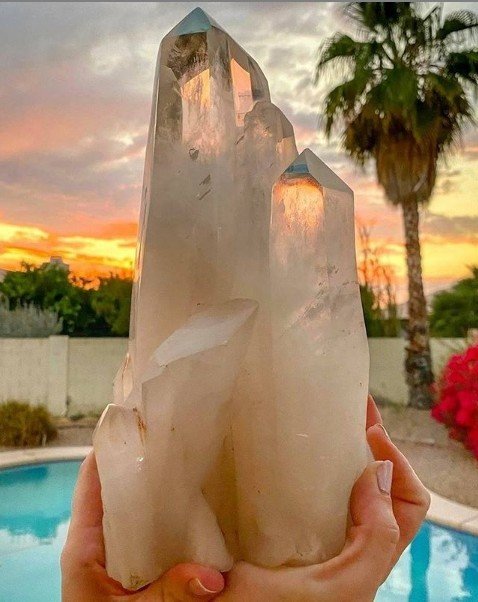
Crystals are earth’s natural beauties often associated with gemstones. The word crystal derives from the Ancient Greek word krustallo, meaning both “ice” and “rock crystal”. Due to its importance which cannot be overemphasized, the question of where to find crystals has become an adventure to many. Examples of large crystals include snowflakes, diamonds, and table salt.
Knowing where to find crystals may depend on the type and size. Crystals found in rocks typically range in size from a fraction of a millimeter to several centimeters across, although exceptionally large crystals are occasionally found. As of 1999, the world’s largest known naturally occurring crystal is a crystal of beryl from Malakialina, Madagascar, 18 m (59 ft) long and 3.5 m (11 ft) in diameter, and weighing 380,000 kg (840,000 lb). The water-based ice in the form of snow, sea ice, and glaciers are common crystalline/polycrystalline structures on Earth and other planets. A single snowflake is a single crystal or a collection of crystals, while an ice cube is a polycrystal.
Read: How to be a groomer at petsmart
With this in mind, you have an idea of what a crystal is and they may likely be seen. This article is specifically written as a guide to places where they can be found.
Where To Find Crystals
- North Carolina
Crystals can be found at Emerald Hollow Mine which is located in Hiddenite, North Carolina. The area is known to have emeralds, as well as amethysts, sapphires, topaz, garnet, and more. Here, you have three options for your search: sluicing, creeking, and digging. In the first scenario, you can sift through “salted” buckets of dirt, as there is an assurance of finding crystals within them. Creeking on the other hand is a slightly more adventurous angle even though there is no guarantee of success. In this method, water brings minerals down from the mine and lands them in the shallow creek bed for relatively easy searching. Then, the final option which involves a hike to the mine and some real digging.
The accumulated treasure can be turned into supercharged jewelry by a lapidary.
- Craters of Diamonds State Park, Arkansas.
Popularly known as North America’s only public diamond mine, it is built atop the world’s eighth-largest diamond-bearing crater. It has also been known to harbor hundreds of notable jewels—white, brown, and yellow diamonds. The largest, discovered in 1924, boasted 40-plus carats.
Here, you can seek out your treasure in one of three ways here. The first, surface searching, which involves a walk up and down the plowed rows of a 37.5-acre field seeking out gems by sight. (This method works best after a rain.) The second involves actual digging, about six inches to a foot down into the soil, and sifting. The third, which is for experienced miners, involves digging deep holes and strategically sorting through the dirt.
- Jade Cove, California
Jade Cove is located in the Big Sur area of California. Though some adventurers shore dive here to find jade, it’s more commonly searched for by sight in the sand. This is best accomplished at the tideline, though treasure hunters are advised not to turn their back to the ocean as currents are strong. Jade can’t always be identified by its color as crystals here, it comes in shades of green, blue, red, black, and brown. They can be easily verified by its immunity to scratching.
- Graves Mountain, Georgia
Graves Mountain is a mineral-rich mountain that is mostly available for digs by appointment only for Georgia Mineral Society members. a was first mined in the 1920s by Tiffany & Co, which used the rutile it unearthed to polish diamonds. It also contains other gemstones like iridescent hematite, pyrite, blue quartz, quartz, and other crystals.
- Cherokee Ruby & Sapphire Mine, North Carolina
According to the Cherokee Ruby & Sapphire Mine, a rare type of gem known as the pigeon-blood ruby can be found here. They’re more valuable than your average stone as they are an extraordinarily large one sold. However, some believe this distinction should only belong to certain rubies of Burmese origin.
To discover the gemstones, digging is done through buckets of soil (as opposed to a search into the actual earth). Unlike some crystal mines, however, Cherokee doesn’t “salt” these treasure troves, meaning they don’t throw in outside gems to sweeten the deal for consumers. The mine is closed from November to May.
- Wegner Quartz Crystal Mine, Arkansas
This property is known for its quartz crystals. It holds crystals that are quite extraordinary in size, clusters are sometimes unearthed here that weigh several tons, and gems are by all account abundant.
These options can be of importance for miners and adventurers, however, if you are unable to explore yours you may require to check out jewelry stores near you or in online shops.



